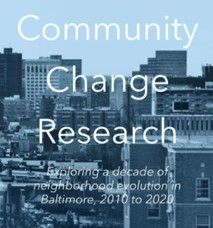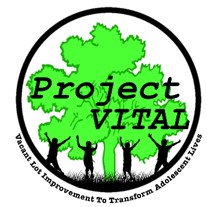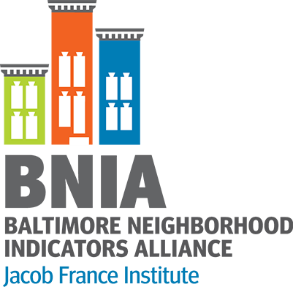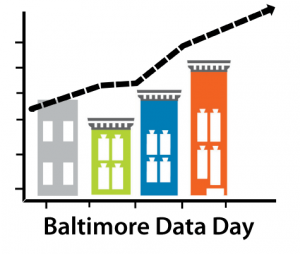Baltimore Neighborhood Indicators Alliance
The goal and mission of the Baltimore Neighborhood Indicators Alliance – Jacob France Institute (BNIA-JFI) of the University of Baltimore is to provide accurate data and objective research to a wide range of groups, organizations, and agencies that result in positive policy change. BNIA-JFI strengthens the principle and practice of well-informed decision making to support stronger neighborhoods, an improved quality of life, and a thriving city. This is accomplished through providing accurate, reliable, and accessible and actionable data, indicators, and research that describe the social economic and quality of life issues impacting the City and its neighborhoods.
For more information about this program visit the BNIA website at www.bniajfi.org or contact bnia-jfi [at] ubalt [dot] edu at (410) 837-4377.
.
Vital Signs are groups of related data points compiled from a variety of reliable sources that “take the pulse” of Baltimore’s neighborhoods. Each Vital Sign comprises a set of data which, taken together, form a picture of any given neighborhood’s quality of life and overall health.
The Vital Signs help BNIA, community members, decision makers, and funders to measure progress towards meaningful, positive outcomes at the community level, and measure needs in specific and actionable ways.
Vital Signs data include more than 150 indicators related to demographics, housing, crime, workforce, health, housing, education, and sustainability. These indicators can be compared to one another, on a community-by-community basis, or to the whole of Baltimore City.
The data is an open source and available for others to use for their integral needs. Whether it is personal projects, mapping tools, software, student projects, individual and organizational research, articles and blog posts, BNIA has you covered. Community members and leaders may find it most useful to examine their community’s data in context to the city or adjacent communities to assess the areas of most need and progress
 Baltimore Community Change 2010-2020 Project
Baltimore Community Change 2010-2020 Project
The Baltimore Neighborhood Indicators Alliance has prepared a series of reports to reflect on the changes that have occurred in Baltimore’s neighborhoods over the past decade. We have begun to work with the preliminary Decennial Census release from August 2021, and unfortunately, the results are discouraging so far. Overall, Baltimore City experienced -5.7% population loss between 2010 and 2020 according to the latest data release. Our current population is 585,708 which is the lowest population in a century. But as with almost everything, population does not affect every part of the city in the same way. Downtown/Seton Hill grew by 46.6% in the last decade and has nearly doubled its population since 2000. Just minutes away from downtown, however, Sandtown-Winchester/Harlem Park lost -29.3% of its population in the same decade. To help us all understand why this might have occurred and how to turn these trends around, we are creating a series of briefs to assess the population and socio-demographics, housing diversity, occupancy, accessibility, connectivity, and quality of life of Baltimore’s neighborhoods and analyze how they have changed.
Baltimore Data Day
Baltimore Data Day is an annual workshop to help communities expand their capacity to use technology and data to advance their goals. Since 2010, community leaders, nonprofit organizations, governmental entities and civic-minded “hackers” have come together to see the latest trends in community-based data, technology and tools and learn how other groups are using data to support and advance constructive change. Baltimore Data Day is structured around a series of “how to” interactive workshops in which people who work with data will explain what data is available, how to access data, and why data can be actionable for communities.
 Project VITAL: Vacant Lot Improvement to Transform Adolescent Lives
Project VITAL: Vacant Lot Improvement to Transform Adolescent Lives
People living near vacant lots and abandoned buildings exhibit poor health; fortunately, recent research has shown that when vacant lots are greened and restored, the health of residents greatly improves. To date, most of this research has focused on adults. BNIA-JFI is part of a collaborative inter-university team to expand on this body of evidence to determine whether and how restoring vacant lots can mitigate health inequalities among disadvantaged adolescents, whose health and well-being are strongly influenced by neighborhood factors. BNIA-JFI’s main role in the project is to build a sharable database containing key characteristics of restored and unrestored vacant lots; While Baltimore City currently has over 18,000 vacant lots and 17,000 abandoned buildings, the City has developed a plan to ‘clean and green’ vacant lots in neighborhoods with large concentrations of vacancy. This provides us with a timely opportunity to explore the impact of vacant lot restoration on the health of adolescents living in disadvantaged neighborhoods, with findings that can be used to develop long-term strategies for improving adolescent health equity.
 ‘The Pipeline’ tracks development projects in the pre-planning stages as a service to developers. Understanding and keeping track of the status of projects during the development review phase is complicated because projects evolve as developers ensure compliance with local land use regulations and produce contextually sensitive final designs. The purpose of the ‘The Pipeline’ is to develop a database and visualization prototype that tracks development projects through the review process and documents the status of the project prior to obtaining a building permit. The database of projects is geocoded and available for visualization on an online mapping tool http://realestate.bniajfi.org. Other data sources include real estate news outlets and other local information. The partnership has sponsored students from the Merrick School of Business Real Estate program to serve as research assistants.
‘The Pipeline’ tracks development projects in the pre-planning stages as a service to developers. Understanding and keeping track of the status of projects during the development review phase is complicated because projects evolve as developers ensure compliance with local land use regulations and produce contextually sensitive final designs. The purpose of the ‘The Pipeline’ is to develop a database and visualization prototype that tracks development projects through the review process and documents the status of the project prior to obtaining a building permit. The database of projects is geocoded and available for visualization on an online mapping tool http://realestate.bniajfi.org. Other data sources include real estate news outlets and other local information. The partnership has sponsored students from the Merrick School of Business Real Estate program to serve as research assistants.
GEOLOOM is rooted in the idea that arts and culture play a significant role in fostering the vitality of a place. Neighborhood-based arts and cultural activity can have an impact on residents’ attachment to their community, the overall economic conditions in their neighborhood, and the quality of life for the entire city.
GEOLOOM provides better understanding of the arts and culture landscape along with the ability to view data within a broader context of demographic, real estate, and ecological information. It will help all of us in decision-making about the City’s future. Through visualization, GEOLOOM will aid cultural institutions, businesses, and elected officials by heightening their awareness of potential audiences, customers, and constituents.
The data you will find in GEOLOOM will be analyzed every year so we can successfully measure community improvements over time, identify gaps and, confidently address arts and culture needs while strengthening all aspects of the City’s social and economic fabric. We welcome feedback on the data and continuously seek to expand both the definition of arts and culture and the types of data available on the website.
GEOLOOM will help you find just what you need – in your neighborhood or across town. The GEOLOOM co>map: community, collaboration, and cohesion in Baltimore.




